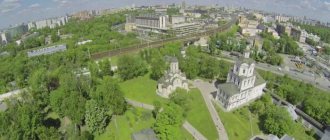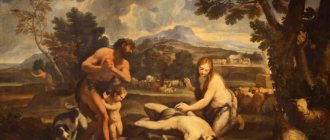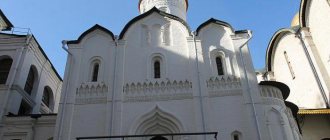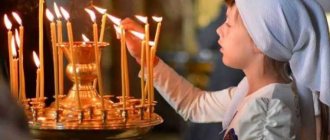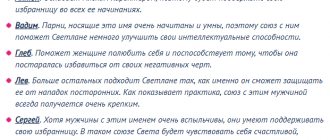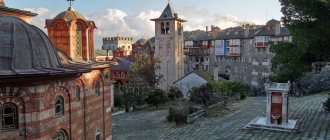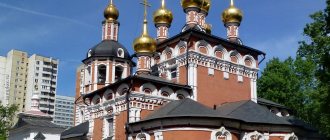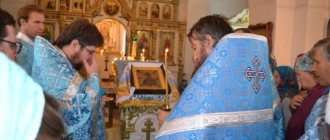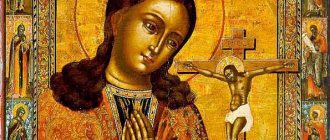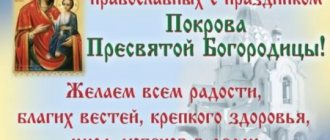The Cathedral Chamber is a concert hall in the building of the former diocesan house, built in 1901-1902. according to the instructions of Metropolitan Vladimir. The ancient building, which originally belonged to the church, changed owners several times and underwent restoration, but in 2006 it again came into the hands of the clergy and returned to its historical appearance. Today, the hall, decorated according to the canons of church art, hosts concerts and events for the general public.
Home construction
The Moscow Diocesan House appeared in 1902. It was built with funds from the Society of Lovers of Spiritual Enlightenment. This organization was founded to research the history of the church and conduct archaeological excavations. The Moscow diocesan house was supposed to become the center of scientific and educational activities of the society.
Money for construction was collected through donations. A total of 355 thousand rubles were spent. The idea was blessed by Moscow Metropolitan Vladimir Bogoyavlensky. The church really wanted a new type of mission center to appear in the second largest city in the country. The date of the first consecration of the Moscow diocesan house is November 5, 1902. The ceremony was conducted by Archpriest Ivan Mansvetov. The house was consecrated in the name of Grand Duke Vladimir Svyatoslavovich - the baptizer of Rus'.
Russian local historian www.roskraeved.ru
From 1997 to May 2021, the Historical and Archival Institute of the Russian State University for the Humanities regularly held local history “Meetings on Nikolskaya” (a monthly conference presenting new literature and scientific and educational projects on local history and Moscow studies), initiated and organized by the Department of Regional History and Local History Institute of the Russian State University for the Humanities (later the Department of Local History and Historical and Cultural Tourism) , Publishing House , Union of Local History Studies of Russia (SKR), Moscow Society of Local Lore (MKO) .
On September 25, 2015, the 150th anniversary meeting of “Meetings on Nikolskaya” .
From September 2021, due to the liquidation of the Department of Moscow Studies, the Department of Local History and Historical and Cultural Tourism at the Russian State Humanitarian University, “Meetings on Nikolskaya” began to be held in the Zaikonospassky Monastery (Nikolskaya St., 7/9) , until November 2021.
In November 2021, a solemn anniversary meeting was organized dedicated to the 20th anniversary of “Meetings on Nikolskaya”, which brought together more than 100 participants. For the first time, “Meetings” were not held on Nikolskaya. For the ceremonial meeting, the organizers were provided with their premises by the Russian Research Institute of Cultural and Natural Heritage named after. D.S. Likhacheva (Heritage Institute) .
This place was not chosen by chance. The medieval Moscow Chambers on Bersenevskaya embankment (20), which once belonged to Duma clerk Averky Kirillov, preserve the memory of the largest Moscow societies and organizations that were directly related to local history: the Moscow Archaeological Society and its “Old Moscow” Commission, the Central State restoration workshops (TSGRM), about the Research Institute of Methods of Local History Work and its successors.
Due to the fact that in February 2021, the Center for Historical and Cultural Local History and Moscow Studies was created the Heritage Institute , which, in its goals, objectives, content of work, is a direct successor to the Department of Local History and Historical and Cultural Tourism of the IAI, and since the Center has become one of the co-organizers of the “Meetings”, it was decided to make the Chambers on Bersenevka the permanent residence of this event, and from March 2021, accordingly, change the name without changing the format and content of the conference-presentation - “Local History Meetings on Bersenevka”.
“Meetings on Nikolskaya/Local history meetings on Bersenevka” is one of the most important forms of work of the TFR and MKO. At the meetings, members of the Council of the TFR and the Council of the MKO, as well as representatives of regional local history organizations, acquaint the local history audience with events in the life of the local history community, with the most important scientific and educational events of the TFR and MKO, with local history life on the ground, with the current state of the local history movement in Russia. And the authors, compilers, publishers present their books, introduce local historians to the latest publications on the history and culture of Moscow, the Moscow region, and the Russian provinces.
Meetings are held in the form of presentations and discussions, where everyone can ask questions of interest and share their opinion about the books presented.
For many authors, especially from remote corners of Russia, “Meetings on Nikolskaya/Local History Meetings on Bersenevka” is the only opportunity to introduce local publications to the general public. “Meetings” often held in the form of themed evenings, at which the local history of one or two regions or regions is presented. For example, on October 28, 2005, was presented ; the meetings on November 25, 2011 and November 30, 2012 were devoted to local history of the Omsk Irtysh region and the activities of the Omsk regional branch of the TFR ; On November 24, 2006, Muscovites became acquainted with the publications of Pskov local historians, and on November 25, 2011 and November 30, 2012 - with the local history movement in the Pskov region and the work of the Pskov regional branch of the TFR; meetings were held three times dedicated to the Union of Local Historians of the Vladimir Region: October 7, 2005, December 24, 2010 and December 21, 2012 ; , 2011 local historians were presented with new books on the history and culture of Crimea; On October 21, 2011 and December 21, 2012, the Smolensk regional branch of the Investigative Committee introduced their work and publications to local historians at the meeting on March 30, 2012, publications and local history projects of two regional branches of the TFR were presented - the Kaluga branch and the Mozhaisk association of local historians; at a meeting on March 29, 2013, of the Tver Regional Local Lore Society spoke about their activities On December 20, 2013, of the Voronezh Territory and Murmansk Territory were presented . Frequent guests at the “Meetings” are members of the Council of the TFR and members of the regional branches of the TFR from Chelyabinsk (I.A. Novikov), Pskov (T.V. Veresova), Velikiye Luki (D.A. Belyukov), Voronezh (A.N. Akinshin). Local historians of Vladimir (L.S. Smetanina) periodically present their publications.
At these meetings, speakers include leaders and members of local history societies, employees of libraries, archives and museums, local historians - enthusiasts who care about the history of their native land and the fate of its cultural heritage, and who want to share their accumulated experience and knowledge with colleagues from other regions. For the Russian Union of Local Historians, such meetings are also an excellent opportunity to strengthen the relationship between its regional branches and jointly discuss the problems of the local history movement. These were precisely the goals pursued by two round tables held as part of the “Meetings on Nikolskaya” : December 24, 2010 “Problems of the local history movement in Central Russia. Directions and forms of interaction of regional local history associations" - with the participation of the Council of the TFR and the Union of Local Loreists of the Vladimir Region and December 21, 2012 "Local history movement in the regions of Russia: directions and forms of cooperation" - with the participation of the Council of the TFR, the Smolensk regional branch of the TFR, the Union of Local Loreists of the Vladimir Region region, representatives of the Mozhaisk association of local historians (regional branch of the TFR), Pskov regional branch of the TFR, the Society of local historians of the Pushkin region (regional branch of the TFR).
In addition to the fact that Moscow local history publications, as a rule, are present in each “Meetings” , a large number of meetings were specifically (or mostly) devoted to Moscow studies topics. A huge role in the publication of literature about Moscow belongs to the Publishing House (1997-2012) , whose books were repeatedly presented as part of the “Meetings” . There were also thematic presentations by the Tonchu Publishing House , which published many books about Moscow and the Moscow region. , the Kuchkovo Pole publishing house has periodically presented its books at “Meetings” Several meetings were devoted to the presentation of the Moscow Encyclopedia . “Moscow Journal” presented “Meetings” 1-2 times a year . New issues of the local history almanac “Moscow Chronicle” are also periodically presented.
From 1997 to March 2021, 170 meetings were held.
Over 20 years, about 1,200 different local history publications were presented at the “Meetings” : popular science books, monographs, scientific collections, documentary publications (archival documents, memoirs, diaries, etc.), guidebooks, illustrated book-albums, reference books and encyclopedias, periodicals (newspapers, magazines, almanacs), maps and atlases, etc.
Anyone can take part in the local history “Local History Meetings on Bersenevka” “Meetings” take place every last Friday of the month (except January and summer months), meetings begin at 17.00.
Opening
During the sermon during the lighting, Archpriest Mansvetov briefly explained the significance of the Moscow Diocesan House. It was not intended only for spiritual purposes, like other ordinary temples. This building was to become a stronghold of enlightenment, becoming a repository for thousands of books. Lectures and public readings on Orthodoxy were held in the house. A missionary center was opened here, where anyone who wanted to join the church could come. The temple became a place of worship every day. The capital's choir sang at festive liturgies.
The opening and consecration ceremony was attended by Moscow Governor General Sergei Alexandrovich, who was the uncle of Nicholas II. A member of the royal family inspected all the premises and was pleased with the work done by the Society of Lovers of Spiritual Enlightenment.
Local cathedral
The first answer to the question of what the Moscow Diocesan House is famous for will be the mention that in 1917-1918. The All-Russian Local Council took place here. This event was epoch-making for all of Orthodoxy. Firstly, local councils have not been held since the 17th century. The huge break was associated with the creation of the Synod, the abolition of the patriarchate and the subordination of the church to the state. The initiator of these reforms was Peter I, who wanted to achieve sole power.
However, at the beginning of the 20th century, the situation in Russia was radically different. When the Local Council opened, the monarchy no longer existed. By this time, the February Revolution had occurred, destroying the power of the tsar. In the new conditions, the Russian Orthodox Church could finally once again become independent from secular authorities. In order to formally confirm this fact, the cathedral began its work. The place of its meetings was the Moscow Diocesan House. For the church, in defiance of St. Petersburg, it was important to organize such an event in the capital city, which was the center of Orthodoxy for several centuries.
Every tenth person is a martyr
Cathedral 1917-1918
Persecution of the Church and reprisals against priests were discussed already at the third session of the Council in 1917-1918. It began with a memorial service for the murdered Tsar Nicholas II and ended with the reading of the first martyrology of the new martyrs who suffered under Soviet rule.
According to this list, by the end of the meetings of the Council, 121 members of the Russian Orthodox Church suffered for their faith, 118 people were in prison. Among the new martyrs were named Metropolitan of Kiev Vladimir (Epiphany), Bishop of Tobolsk Hermogenes (Dolganev), Bishop of Oryol Macarius (Gnevushev) and Bishop of Kirillov Varsanuphius (Lebedev); two archimandrites; eight archpriests, including Philosopher Ornatsky, rector of the Kazan Cathedral in Petrograd, and John Vostorgov, rector of St. Basil's Cathedral on Red Square in Moscow; 20 priests; 8 monks and 7 laymen. Among the new martyrs, whose names were not known, there were 7 priests and 18 laymen.
In September 1918, the work of the Local Council was forcibly stopped: the Bolsheviks took away the building. Subsequently, many members of the Council suffered and suffered martyrdom, about 50 (that is, every tenth!) of them are now canonized.
On November 17, 2008, on the eve of the day of remembrance of Patriarch Tikhon, a cross was installed over the restored golden dome of the Prince Vladimir Church, and regular services began in the lower church. The raising of the cross is a solemn moment and a breathtaking spectacle - such joy!
In February 2010, His Holiness Patriarch Kirill visited the Diocesan House. He said firmly: “This house needs to be restored!” and provided decisive assistance, without which it would not have been possible to consecrate the renovated Diocesan House and the Prince Vladimir Church for the 1000th anniversary of the Holy Equal-to-the-Apostles Prince Vladimir in 1915.
Restoration of the patriarchate
The local cathedral worked for almost 13 months. In the fall of 1917, the October Revolution occurred and the Bolsheviks came to power. The new government was one of the first to issue a decree on the separation of church and state. Meanwhile, what happened at the cathedral was what the Moscow Diocesan House is famous for.
On November 4, 1917, at a plenary meeting, it was decided to restore the title of patriarch, abolished by Peter I. This event became a symbol of a new stage in the life of the Russian Orthodox Church. Tikhon Bellavin was elected the first patriarch after a two-century break.
At the same time, the first Bolshevik repressions began, directed against the church and its hierarchs. On February 25, 1918, it became known about the murder of Kyiv Metropolitan Vladimir. It was he who, several years earlier, became one of the initiators of the construction of the Moscow diocesan house. Subsequently, hundreds more people who took part in the meetings of the Local Council were subjected to repression and persecution. Some of them suffered a painful death. 40 people were later canonized as new martyrs. On September 20, 1918, the Bolsheviks forcibly interrupted the work of the Local Council in the Moscow Diocesan House.
History of the Moscow Diocesan House
Before the October Revolution of 1917, the Moscow Diocesan House was the center of public education, culture, spiritual education, the fight against sectarianism, missionary activity and social service of the Russian Orthodox Church of the early twentieth century.
The house was built with the blessing of Metropolitan of Moscow and Kolomna Vladimir (Bogoyavlensky) in 1901-1902 according to the design of the famous architect P.A. Vinogradov (1858-1910). The building included educational and administrative premises and the Prince Vladimir house church. The painting and decoration of the temple were entrusted to the outstanding icon painter and restorer Vasily Guryanov (1867-1920). Among the donors for the construction of the house were members of the royal family.
Construction of the house began in 1901, the house Prince Vladimir Church was consecrated on December 30, 1902. The Governor General of Moscow, Grand Duke Sergei Alexandrovich, and his wife, Grand Duchess Elizaveta Feodorovna, were present at the celebrations.
Daily services were held in the temple. Sunday and holiday Liturgies were sung by a choir of Moscow factory workers under the direction of S.A. Solntseva and the choir of the Society of Lovers of Church Singing. On Sundays, Vespers was celebrated with general folk singing, after which conversations of religious and moral content were held.
The building housed an extensive diocesan library, with a reading room for everyone.
The Diocesan House also housed the editorial offices of the spiritual magazines “Moscow Church Gazette” and “Sunday Conversations”. Numerous brotherhoods and societies worked here, including the Brotherhood of St. Peter, the Cyril and Methodius Brotherhood, and the Missionary Society, known throughout Russia for its apostolic activity among foreigners in Siberia, Japan, China, and America.
The house also housed the diocesan school council and the department for distributing spiritual and moral books, and the guardianship of the poor clergy, which was in charge of almshouses and shelters. There was a spiritual censorship committee, a church archaeological museum with unique collections of church antiquities, and a committee for collecting church utensils for distribution to poor churches.
Since 1918, classes at the Orthodox People's Academy, a unique higher educational institution that combined theological education with secular education, began in the Diocesan House.
In August 1917, the Local Council of the Russian Orthodox Church began working in the Diocesan House. The meetings of the Council were mainly held in the large hall of the Diocesan House, which received the name of the Cathedral Chamber. Here, in the fall of 1917, a historic decision was made to restore the Patriarchate in the Russian Orthodox Church, and elections of candidates for the Patriarchal throne were also held here. The elections ended on November 5/18, 1917 with the election of the Patriarch, who became Metropolitan Tikhon of Moscow.
The work of the Council took place under conditions of Bolshevik persecution. On February 25, 1918, the honorary chairman of the Council and founder of the Diocesan House, Metropolitan Vladimir of Kiev and Galicia, was brutally murdered in Kyiv. Subsequently, many members of the Council suffered and suffered martyrdom, about 50 of them have already been canonized as new martyrs. On September 20, 1918, the work of the Local Council was forcibly interrupted.
In June 1922, the Diocesan House was closed. Museum collections and libraries were looted, the decoration of the Prince Vladimir Church was destroyed.
In 1924, the former Diocesan House was occupied by Glavpolitprosvet, and reconstruction of the building began.
In April 1930, the building on Likhov Lane was transferred to the Mezhrabpomfilm joint-stock company to create a “Rot-Front film production factory.” Under the leadership of architect G.K. Oltarzhevsky's house was rebuilt in the style of constructivism, 4 floors were built over the right wing, the bell tower and the golden dome of the Vladimir Church were demolished. In the space of the temple under the dome, six floors were built using five tiers of ceilings. The building has completely lost its original appearance.
The heir to the film factory was the Central Studio of Documentary Films (CSDF), which arose from it.
During the years of perestroika, the TsSDF experienced difficult times and eventually lost the building. After a false bankruptcy, house 6 on Likhov Lane passed into private hands.
In 1992, the Orthodox St. Tikhon's Theological Institute opened in Moscow. At its presentation on December 8, 1992, the question of returning the former Diocesan House and transferring it to a new educational institution was raised, which would allow the former Diocesan House to be completely returned to its original purpose. However, there was no response from the Moscow authorities.
For more than 10 years there has been a struggle for the return of the former Diocesan House of the Russian Orthodox Church. Finally, thanks to the joint efforts of the Church and the Board of Trustees of the Orthodox University of St. Tikhon with the support of His Holiness Patriarch of Moscow and All Rus' Alexy II and with the participation of the Administration of the President of Russia V.V. Putin in 2004, the building of the former Diocesan House was returned to the Russian Orthodox Church and transferred for the needs of the Orthodox St. Tikhon Humanitarian University.
With funds raised by the St. Tikhon's Fund for the Support of Orthodox Education, construction and restoration work began in 2006 to recreate the historical appearance of the Diocesan House. On November 17, 2008, on the eve of the day of memory of Patriarch Tikhon, a cross was erected over the restored golden dome of the Prince Vladimir Church.
On February 20, 2010, in the church built in the lower floor of the building in honor of St. The first Liturgy was celebrated for Patriarch Tikhon and the participants of the Local Council, glorified as holy martyrs.
On the same day, His Holiness Patriarch Kirill of Moscow and All Rus' visited the Diocesan House, blessed the continuation of work to revive the building and promised his assistance. After this, the full-scale restoration of the Diocesan House began. It was carried out as part of preparations for the celebration of the 1000th anniversary of the repose of the holy Equal-to-the-Apostles Prince Vladimir (July 28, 2015).
The demolished bell tower with a porch was completely recreated, as well as the facade of the house, the area of the 3rd floor was increased, an attic floor was erected, the lost elements of stucco molding and decor of the Cathedral Chamber and other historical premises were restored, and artistic painting of the temple was carried out.
On July 26, 2015, His Holiness Patriarch Kirill of Moscow and All Rus' consecrated the Prince Vladimir Church and the Church in honor of St. Tikhon and members of the All-Russian Local Council in the Diocesan House.
Today, the former Diocesan House is the main administrative building of PSTGU; the rector’s office, library, and the largest faculty of the university, Theological Faculty, are located here. The unique historical building of church Moscow is again used for its intended purpose, intended by its creator, Hieromartyr Vladimir - to be the center of spiritual education, missionary activity and social service of the Russian Orthodox Church.
Press service of PSTGU
Share:
- Click to share on Facebook (Opens in new window)
- Share on Twitter (Opens in new window)
- Send link to Odnoklassniki (Opens in new window)
- Send link on VKontakte (Opens in new window)
- Send link to My World (Opens in new window)
- Click to share on Google+ (Opens in new window)
Closing
In 1918, the Orthodox People's Academy opened in the diocesan house. For its time, it was a unique institution of higher education that combined theological and secular education. He managed to work a little. The Soviet government's pressure on Orthodoxy continued.
Soon an anti-religious campaign began under the slogan of requisitioning church property. The pretext for the robberies was statements that the valuables would be sold, and the proceeds would go to help the starving people in the Volga region.
The Moscow Diocesan House also fell under this skating rink. The history of its first period of existence ended when the building was closed in 1922. Over twenty years of work, unique museum collections dedicated to Orthodox antiquities and relics have appeared here. All exhibits and unique books were requisitioned. The Vladimir Church was especially damaged, in which, among other things, all the decoration was simply destroyed.
Twice Born
The diocesan house (house No. 6 in Likhov Lane) in the city of Moscow stands at the origins of the feat of the new martyrs and confessors of the Russian Church.
It was built with the goal of uniting the spiritual forces of Orthodox people 15 years before the social catastrophe of 1917, as if in anticipation of impending events - as the spiritual and missionary center of the Moscow diocese . Various courses, meetings, concerts, services with folk singing, our own printing house and publishing house, Orthodox societies, etc. - all this helped a large number of caring people to get involved in church life and activities, to work for the enlightenment and spiritual education of the people.
It is no coincidence that meetings of the Local Council of the Russian Orthodox Church were held here in 1917. The huge hall, which is a continuation of the magnificent temple in honor of the holy Equal-to-the-Apostles Prince Vladimir, has since become known as the Cathedral Chamber. More than half of its participants were soon repressed, and the Diocesan House itself was “expropriated”: plundered and mutilated beyond recognition by perestroika.
Cathedral 1917-1918
Today, from the walls of the restored Cathedral Chamber, those who, under the roar of revolutionary cannonade, voted for the restoration of the Patriarchate in the Russian Church are looking: the first martyr among the bishops - Metropolitan Vladimir (Epiphany), builder of the Diocesan House in Moscow, St. Tikhon, soon elected All-Russian Patriarch, Metropolitan Benjamin of Petrograd (Kazansky), Metropolitans Kirill (Smirnov), Agafangel (Preobrazhensky), who became candidates for locum tenens of the patriarchal throne, Locum tenens after the death of St. Tikhon - Metropolitan Peter (Polyansky), Elder Hieroschemamonk Alexy the Recluse (Soloviev), who drew lots for the patriarchate to St. Tikhon.
Irina Shchelkacheva, assistant to the rector of PSTGU:
— Until 1902 in Moscow, even for the annual diocesan meeting it was necessary to rent a hall in the Assembly of the Nobility. And so, with the blessing of the Moscow Metropolitan, the future Hieromartyr Vladimir (Epiphany), the construction of the Diocesan House “as a center of religious education, educational, publishing and missionary activity” was begun and completed in 1902.
The Vysoko-Petrovsky Monastery gave its land for construction.
Photos of the first quarter of the 20th century
The house and temple in Likhov Lane were built with church money (although members of the royal family were among the donors for the construction).
This house was huge for those times, and many different societies immediately settled here, led by the already mentioned Society of Lovers of Spiritual Enlightenment.
An extensive diocesan library with a reading room for everyone was moved here, the editorial offices of the spiritual magazines “Moscow Church Gazette” and “Sunday Conversations” were located here, the Brotherhood of St. Peter, the Cyril and Methodius Brotherhood, the Missionary Society, known throughout Russia for its activities among the foreigners of Siberia, gathered here, Japan, China, America.
2021
The house housed the diocesan school council, the department for the distribution of spiritual and moral books, the guardianship of the poor clergy, which was in charge of almshouses and shelters, the spiritual censorship committee, the church-archaeological museum with unique collections of church antiquities, the committee for collecting church utensils, sending out necessary liturgical items to poor churches. This listing of societies and their activities allows us to understand today how much work the Church had.
Since 1918, the Orthodox People's Academy was opened in the Diocesan House, the heirs of which today are PSTGU. It was a unique educational institution that combined higher theological education with secular education. Unfortunately, it existed here for only two months... In a word, until the revolution itself there was a center for the fight against the advancing godlessness.
Soviet period
During the years of the USSR, the building on Likhov Lane changed many owners. At first, the Krupskaya Academy was located there, as well as a cinema. After the requisition of property, reconstruction of the premises, including the temple, began. Everything was done to ensure that the appearance of the house did not in any way remind of its Orthodox past. The golden dome and bell tower were demolished.
For some time the building was used by the Dmitry Mendeleev Institute of Chemical Technology. In 1930, the premises were transferred to the needs of the film industry. The Central Documentary Film Studio opened here. This enterprise became advanced for the entire Soviet country. In 1931, the studio produced the first domestic sound film called “A Start to Life.” During the Great Patriotic War, films were brought to the building from the front for editing newsreels.
Building with unclear owner
When communist power was in the past, the Russian Orthodox Church began to seek through the courts the return of its lost property from the state. First of all, it was, of course, real estate. In 1992, the Orthodox St. Tikhon's Theological Institute was founded in Moscow. Over time, this higher education institution has become one of the most important in its niche. Also in 1992, the institute’s leadership began bombarding the mayor’s office with proposals for the return of the Moscow diocesan house.
When the building was first built, it was intended for educational purposes. In this it was very similar to a newly founded Orthodox institute. In the 90s, Patriarch Alexy II himself wrote letters to President Boris Yeltsin asking him to consider returning the famous building to the church. Then a written refusal followed, signed by Anatoly Chubais.
Returning the house to the church
In the 90s, the building still housed a documentary studio. She went broke. Its management decided to declare bankruptcy and sell the building. Under the terms of the deal, it passed into the hands of a private company, which wanted to demolish the house and put a new office complex in its place.
Then the church began to sue the owners. Twenty cases were lost. It was a long and grueling process. The failures were due to incorrect paperwork and other procedural difficulties. By that time, the building was in disrepair, caused by a long lack of repairs.
Cathedral Chamber today
The cathedral chamber is the most spacious hall in the house, its length is 35 m, its width is 17 m, the height of the walls is 9 m. In front of the altar there is an elevation - a sole, which, in combination with high ceilings, ensures that the sound diverges to the last rows.
During Soviet times, the premises housed a hall for film screenings, which by 1990 was in disrepair. During the restoration, the decoration of the Cathedral Chamber was restored using photographs and archival descriptions.
Today, the hall, designed for 750 people, hosts concerts based on classical musical works. Famous ensembles perform on stage under the direction of top-level conductors. Informative lectures are held on the formation of the Russian Church, on war and revolution, on the art and origin of musical instruments.
How to get there
The address of the diocesan house is: Likhov Lane, 6. You can visit it by taking bus No. 15 to the Karetny Ryad stop or T10 to the Puppet Theater stop. Obraztsova".
The nearest metro station is Tsvetnoy Boulevard, travel time to the Cathedral Chamber is 15 minutes on foot. A little further is the Trubnaya station, you can walk from it in 20-25 minutes at a fast pace.
Restoration and rededication
After the famous house again became the property of the church, development began on a project to return it to its historical appearance. In 2006, an expert commission recognized the building as a cultural heritage site. After this, restoration work began.
The temple was restored first, and a little later - the rest of the building. The second date for the consecration of the Moscow diocesan house is December 17, 2014. Domes and a cross were raised to the bell tower of the local church.
The first consecration of the Moscow diocesan house ended with the appearance of an Orthodox educational center in the building. After the restoration of the cultural heritage site in 2015, the new main building of the Orthodox St. Tikhon's Humanitarian University opened here.
